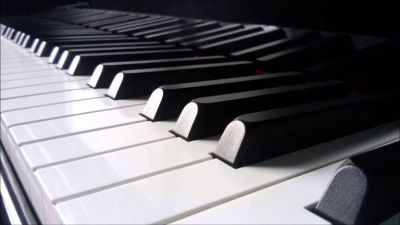Advanced chords can be complex and often intimidating for many aspiring piano players. It’s very useful become well versed with basic chords before you take on more advanced ones. Beyond the basics, more advanced chords can add depth to your music and really make it sound professional.
I want to share with you the 7 flat 13 chord. It can add a unique flavor to your music.
What is a 7 flat 13 chord?
A 7 flat 13 chord is a type of chord that is commonly used in jazz and blues music. It is a dominant chord that is made up of the root, major third, perfect fifth, flatted seventh and flatted thirteenth tones.
It can be denoted as a 7(b13) chord, indicating the presence of the 7 and the flatted 13th tone.
To better understand the 7 flat 13 chord, let’s take a look at an example. Let’s say we want to build a 7 flat 13 chord on the note C. The notes we would use to construct this chord are C, E, G, Ab, and Bb. The resulting chord would be C7(b13).

The above example is a closed voicing and not necessarily the way that you would voice the 7 flat 13 chord. One way to voice the chord would be to spread the notes out and omit the 5th. This would be an open voicing.

You can also include the 5th in 7 flat 13 chord.

How to use a 7 flat 13 chord.
A 7 flat 13 chord can add a unique flavor to your music by adding tension which creates interest. It can be used in a variety of ways. Here are a few examples of how you can use a 7 flat 13 chord:
- In a dominant chord progression
The 7 flat 13 chord is often used in dominant chord progressions, particularly in blues and jazz music. It can add a sense of tension and release to the progression, and can be used to create interesting and unexpected harmonic changes. In place of the V7 chord, you can play the V7 flat 13 chord.


- In a minor key
The 7 flat 13 chord can also be used in a minor key to add color to the progression. For example, in the key of A minor, a 7 flat 13 chord built on the note E can be used to add tension and create a unique sound.


- As a passing Chord
The 7 flat 13 chord can also be used as a passing chord in transition to other chords. It can be used to create tension and release, and in turn used to create unique and unexpected chord progressions.


Here are a few more examples of 7 flat 13 chord voicings and how they can be used in chord progressions: Notice that I also threw in the 9th in some of these chords as a color tone for variety.
- D7(b13)
This chord is constructed using the notes D, F#, A, C, and Bb. It can be used as a dominant chord in a blues or jazz progression. For example, a common chord progression in the key of G would be G7 – C7 – D7(b13). The D7(b13) adds tension to the progression before resolving back to the G7.


- F7(b13)
This chord is constructed using the notes F, A, C, Eb, and Db. It can also be used as a dominant chord in a blues or jazz progression. For example, in the key of Bb, a common progression would be Bb7 – Eb7 – F7(b13) – Bb7. The F7(b13) adds tension to the progression before resolving back to the Bb7.


- G7(b13)
This chord is constructed using the notes G, B, D, F, and Eb. It can be used as a dominant chord in a variety of progressions, such as in the key of C. For example, a common chord progression would be Cmaj7 – A7 – Dm7 – G7(b13). The G7(b13) adds a unique flavor to the progression before resolving back to the Cmaj7.


- Bb7(b13)
This chord is constructed using the notes Bb, D, F, Ab, and Gb. It can be used in a variety of progressions, such as in the key of F. For example, a common progression in this key would be Fmaj7 – Dm7 – Gm7 – Bb7(b13) – C7 – Fmaj7. The Bb7(b13) adds tension and color to the progression before resolving back to the Fmaj7.


I also want to emphasize that voicing a 7 flat 13 chord has a significant impact on how it will sound. Even though I’ve shared it with you in root position, this is mainly to illustrate the chord by definition. It’s often voiced rearranging and omitting certain notes.
In summary, the 7 flat 13 chord can be used in a variety of progressions and can add a unique flavor to your music.
By understanding how to construct and use this chord, you can add a new dimension to your playing and create sounds that are both interesting and unexpected. So go ahead and experiment with the 7 flat 13 chord, and see how it can add color and depth to your music.
Until next time, Go Play!
Greg Lee
Latest posts by Greg Lee (see all)
- What is a minor/Major 7 Chord? - October 26, 2023
- 7 Chord Substitutions that Professionals Use - October 19, 2023
- 5 Simple Chord Tricks to Sound Amazing - October 5, 2023




